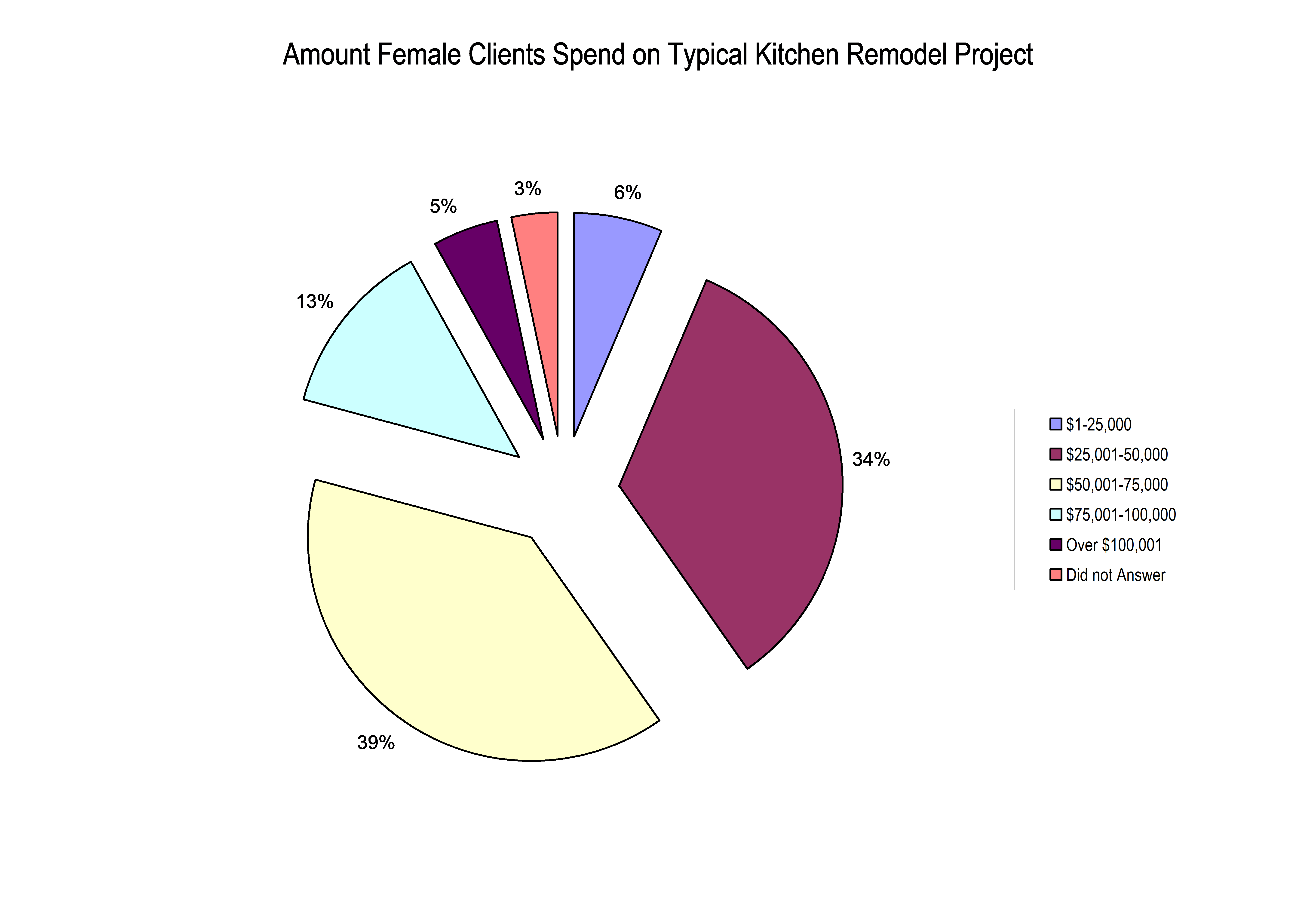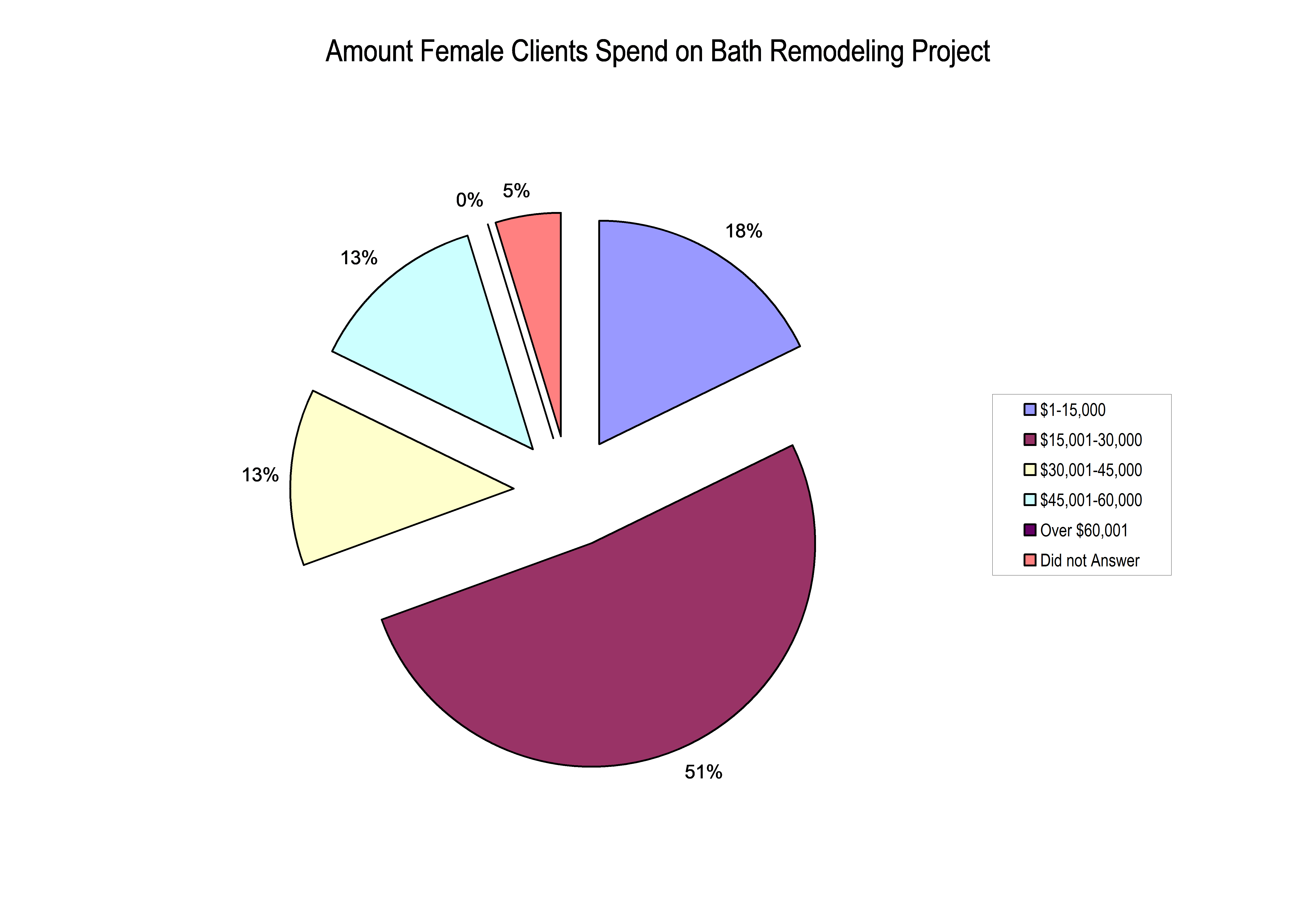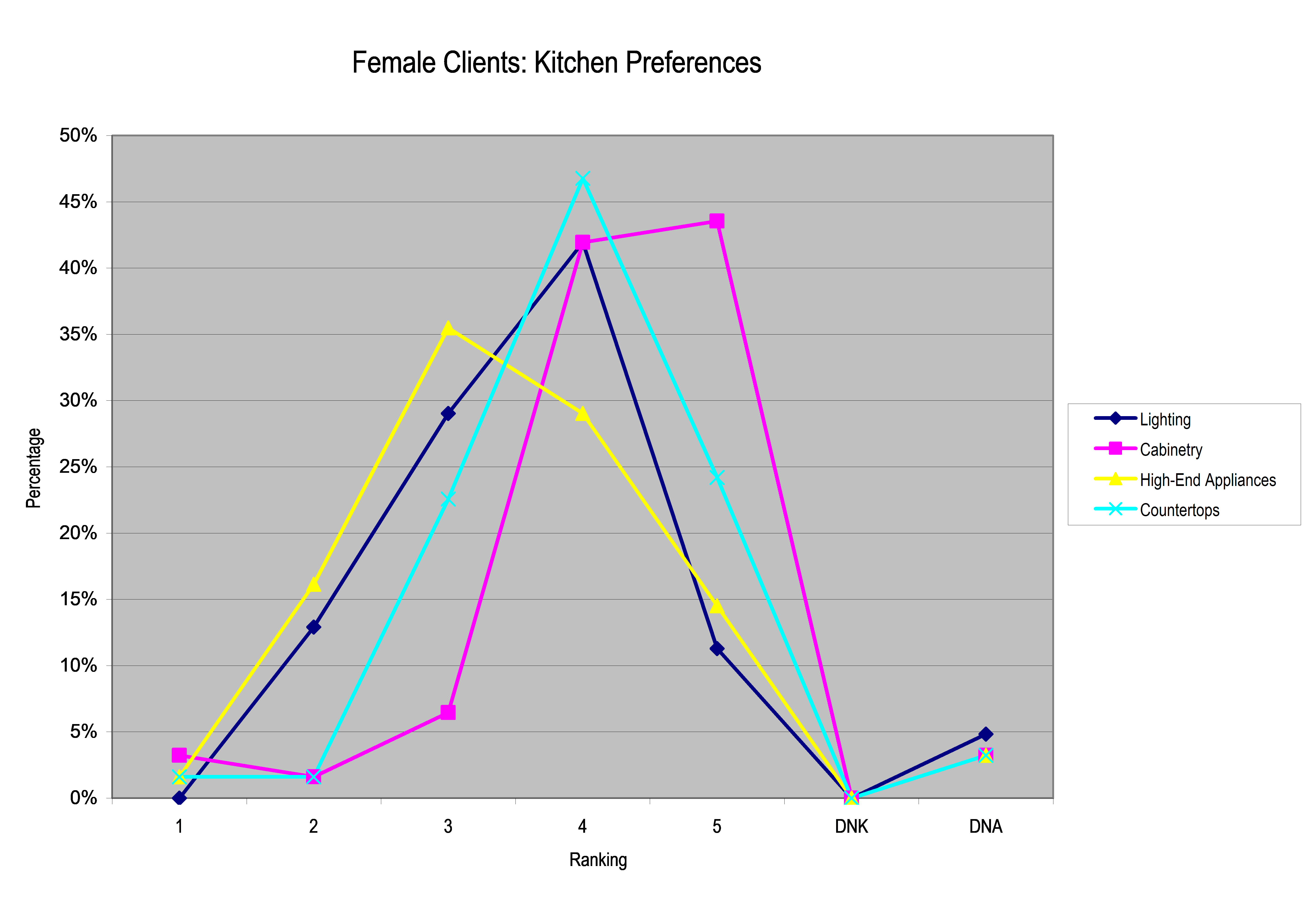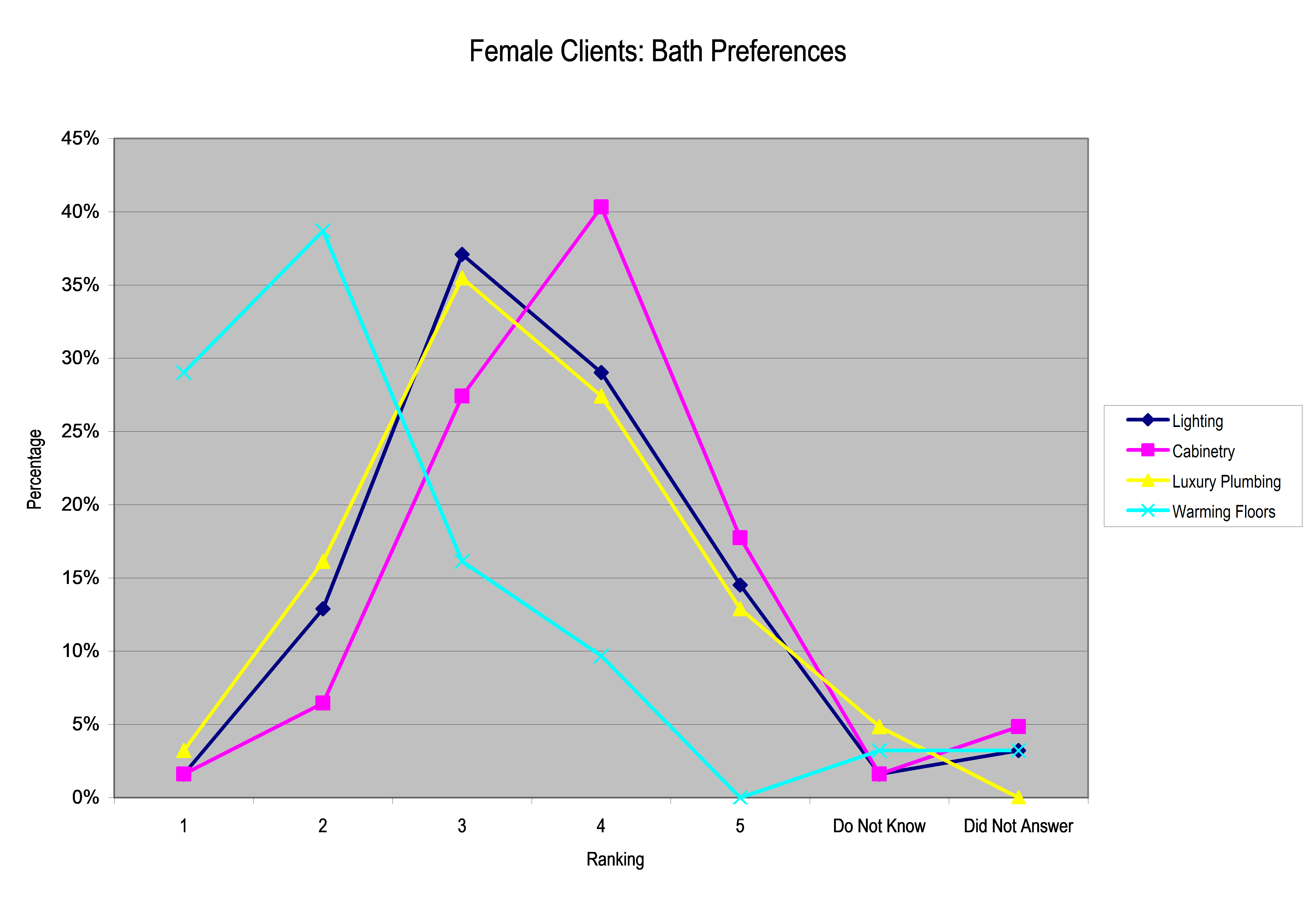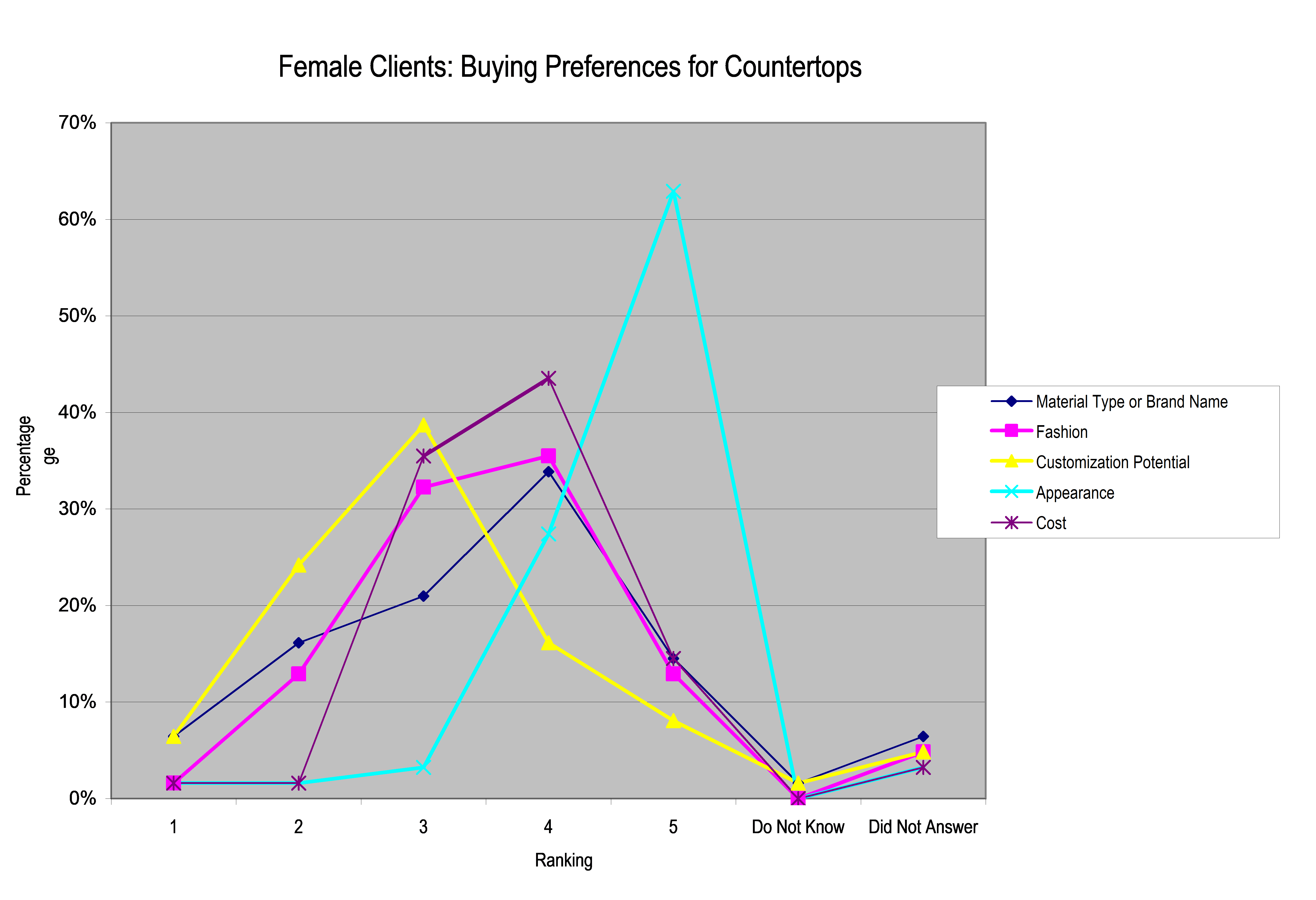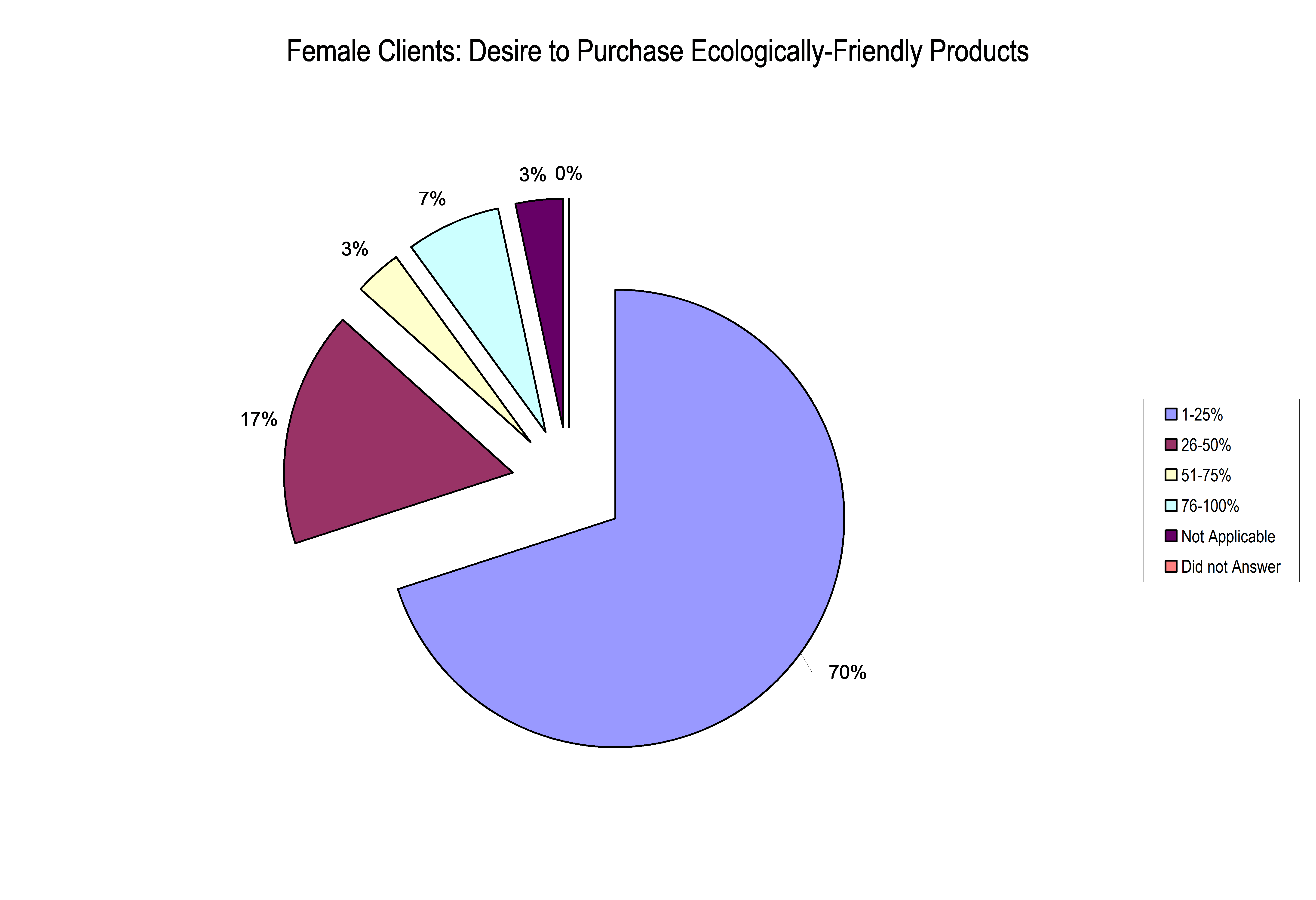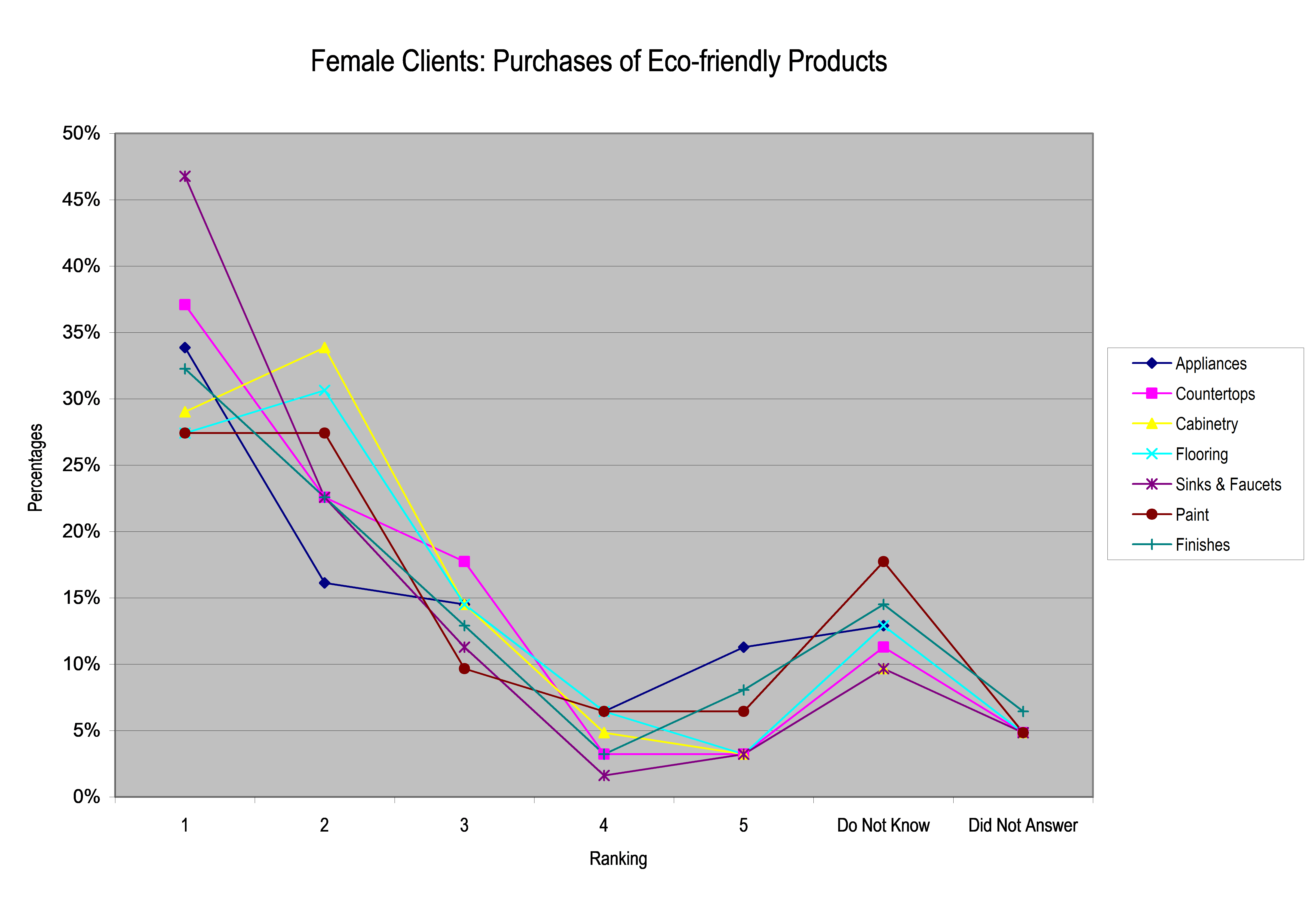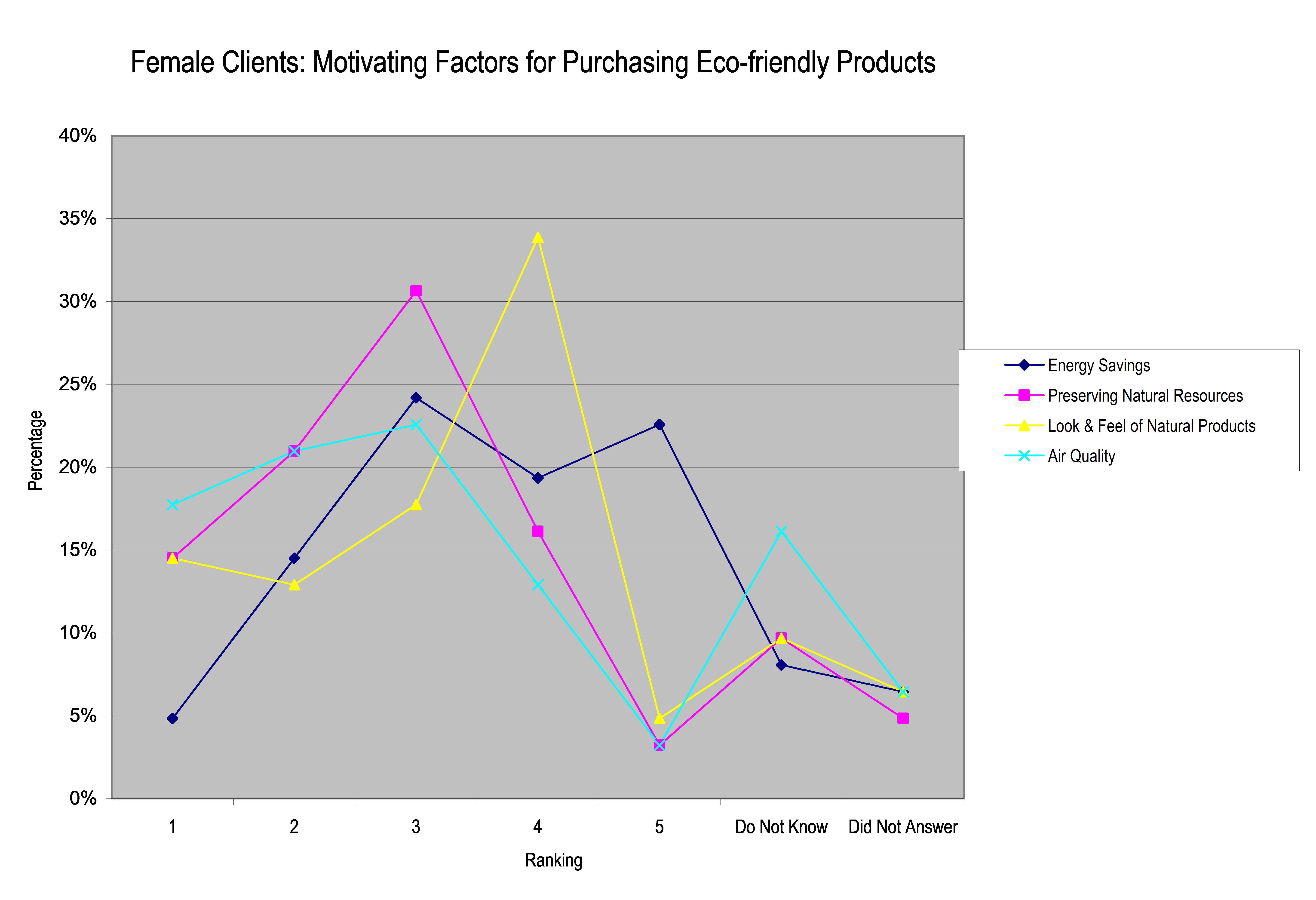The CPO of the Home: How Women Influence Home Purchases
A white paper by Kleber & Associates
A chief purchasing officer (CPO) is the executive of a corporation responsible for the management, administration, and supervision of the company’s acquisitions, such as contracting services and purchasing supplies, equipment and materials. For many decades, and even now, women have been considered the CPOs of their households. Women have an outsized influence on home-related purchases – from groceries to home improvements – as they are often the person in the household most in tune with the needs of individual family members.
In the 1970s, women tossed aprons aside, bucked centuries of traditional ideas about the ideal “homemaker,” and began entering higher-paying corporate jobs alongside men. In fact, in many of today’s homes, women are the primary breadwinner. Despite advances in male and female equality, women today still account for 85 percent of all consumer purchases and 91 percent of new home purchases. According GfK market research, 74.9 percent of women identify themselves as the primary shoppers for their households. Furthermore, women purchase more than 50 percent of products traditionally associated with males, including automobiles, home improvement products, and consumer electronics.
Women have tremendous buying power in America – and it’s growing as women continue to exert a greater influence over household income in many homes. Nielsen consumer research estimates that women’s total purchasing power currently ranges from $5 trillion to $15 trillion annually. The Federal Reserve estimates that women now control two-thirds of the nation’s wealth. It is no surprise then that women have great influence on the U.S. economy, and – in many cases – exercise more authority over household financial decisions.
Kleber & Associates collaborated with an Atlanta-based marketing research firm to explore the economic power women have acquired during recent years. It’s no secret that many consumer-focused companies have realigned their attention to target female markets. In our research, we sought to determine what the CPO of the home looks like, how she functions as a consumer, and how she goes about making purchasing decisions (i.e., how is she influenced). In our white paper, we profile the family CPO, describe who exactly the family CPO of today is, and define what attributes and purchasing behaviors set her apart from her predecessors.
A Day in the Life of the Home CPO
The room is still dark. Janet wakes, leans over and glances at the alarm clock – it’s 5:55 a.m. She yawns, stretches and eases out of bed. No need to wake her snoring husband who can sleep for another hour before he takes the kids to school. Janet searches in the dark for her jogging attire. The morning silence is broken by an almost imperceptible beeping (ah, the coffee is ready). She tiptoes quietly to the kitchen to grab a cup. On her way out the door, she quickly checks her work email from her smartphone. (When half of your company works overseas, your email inbox is always full.)
This morning, Janet is meeting some of her professional colleagues for a five-mile trail run in a nearby park. She hops into her SUV and backs out of her garage, hoping the car’s noise won’t wake the family. Making her way to the park, she mentally reviews her morning schedule: Finish run by 7:15 a.m.; travel to company health club by 7:30 a.m. for a shower; breakfast meeting with CFO at 8 a.m.; in the office by 9:15 a.m. at the latest.
Janet’s life is not unlike many of her peers. She isn’t the first 38-year-old woman to break through the executive glass ceiling. In fact, Janet’s mother, though now retired, set the stage by becoming the first female executive in her company in its history. From the time she was very young, Janet never considered that she would be anything less than a successful, aspiring professional in a lucrative career.
Consider Janet’s family: she has been married to her husband for 10 years and together they have two young children, a boy and a girl. Janet didn’t marry fresh out of college. After graduating magna cum laude with a degree in finance from a prestigious state school, she received a scholarship to study at a top-rated business school, where she earned her master’s in business administration (MBA). She received three significant job offers prior to graduation and accepted the offer she believed would offer the most exposure and opportunity to advance her career.
Janet met her husband, an attorney, when she was negotiating the sale of a corporate subsidiary to his company. He was immediately taken with her fire, determination and talent. A relationship wasn’t a priority, but in the end, they found a unique compatibility and married one year later. When their son was born, Janet’s husband left the corporate world to start his own law practice. This enabled Janet to maintain her corporate job. While acknowledging being a stay-at-home mom as an admirable job, she knew she’d be miserable if she stayed away from work for more than two months. Fortunately, she found and hired a wonderful full-time nanny who became the children’s primary caregiver.
When their daughter was born a few years later, Janet took the mandatory leave of absence from work and was back in the office six weeks following her delivery. Somehow, during pregnancy, she found time to research and buy a larger home for her family. Despite the fact that she and her husband made the ultimate buying decision together, she eliminated all but two of the houses she previewed before her husband ever became involved in the process.
Now, seven years and several promotions later, Janet’s career is on the fast track. As an executive, she works long hours and feels regretful when she works too late to put the children to bed. Occasionally her job requires her to travel, but she is specific with her superiors that only in limited instances will she be gone overnight.
Despite being frenetic, her home life is manageable – the children are in an excellent school and their father participates in an afternoon carpool. On Friday evening, Janet turns off her cell phone and computer. The weekends are strictly reserved for family time and activities, a time the entire family looks forward to.
It is 9:25 a.m. and Janet arrives at her office. Her breakfast meeting lasted longer than expected, but she uses the opportunity to inform the CFO about a potential acquisition from one of their major competitors. Her assistant hands her a stack of files and reminds her of her daily appointments. She glances at her computer and notices there are currently 24 email messages, of which four require immediate attention. There are also a half-dozen voicemail messages.
Janet’s demanding schedule is not unusual. Today, she attends three back-to-back meetings, chairs a company job-wellness task force meeting, handles more than 50 emails (the rest are delegated), talks to her pool contractor who needs an immediate decision about what type of pool surface she wants, and discusses with her landscape architect the outdoor plan she received at home last night. She also talks to her children when they arrive home from school (dad’s home and working from his home office) and promises she will be home in time for supper.
On her way home from work, Janet picks up a few grocery items, the dry cleaning, and stops to fill her gas tank. She is home by 6:30 p.m. and after greeting her husband, who is preparing a simple dinner, she kicks off her shoes and joins her children in the family room where they are watching Netflix. Following dinner, Janet cleans the kitchen with the children’s help, checks their homework and prepares them for bed. Once they are tucked in, she collapses on the family room couch next to her husband where they spend the next hour catching up on the day’s activities.
Before she goes to bed, Janet gets on the computer where she pays family bills, balances their checking accounts, and visits a website where she purchases an outdoor dining set for their new patio. She takes her iPad with her to bed and catches up on the news before dozing off to sleep. Fortunately, since she ran this morning, she can squeeze in an extra half hour of sleep before waking up to a new day.
Janet, consciously or not, makes the decision to have both a family and challenging career. She has the advantage of following in her mother’s footsteps – a path that leads her to both career and family success. Janet finds that having a balanced life can be tricky, but she works hard to keep this balance in check.
Though Janet may not represent all career women, many corporate and non career-minded women understand the difficulty of maintaining checks and balances in their lives. They are also similar in how they approach purchasing decisions and other life-related decisions.
The Research
Our interest in understanding the purchasing habits of educated, career-minded females followed a reading of Dan Kindlon’s groundbreaking book, Alpha Girls: Understanding the New American Girl and How She is Changing the World. In the book, Kindlon defines an alpha girl as, “a young woman who is destined to be a leader. She is talented, highly motivated and self- confident. She doesn’t feel limited by her sex; she is a person first…then a woman.” He goes on to further define an alpha girl as someone who:
- Maintains a 3.8 or above grade-point average
- Serves in a leadership position in one or more of the following activities: school academic organizations or clubs, sports, community service, drama or student government
- Participates in a minimum of 10 hours of extracurricular activities
- Is motivated to strive for high achievements in life
- Is dependable
The alpha girl represents the next generation of women. According to Kindlon, the oldest alpha girl was born in the 1980s. We wondered, then, how well career-oriented women in various age groups (Gen X, Millennials and Baby Boomers) are doing in their lives. Specifically, we wanted to validate our belief that women in their 30s, 40s and 50s represent a vastly unrealized economic force that has a defined interest in the purchase of all things household-related. We identified these women as the Chief Purchasing Officer, or CPO, of the home.
Quantitative Analysis
Kleber & Associates commissioned research designed to understand the purchasing habits of a growing demographic: educated women who are consumer-driven, environmentally conscious and financially secure. Much of the focus targeted the decisions and purchases made related to the home.
The initial phase, or quantitative research, consisted of an online survey designed for the SEN Design Group and DreamMaker Bath & Kitchen. Together, these companies represent noted kitchen and bath designers and remodelers. The focus of the survey included gaining a better understanding of their female consumers’ purchasing habits when remodeling a kitchen or bath. Following are some key findings:
- 97 percent of all respondents claim that the majority (50 percent or more) of their client base are female decision makers.
- 97 percent of all female clients are age 40 and above. One may conclude, then, that women over 40 are more inclined to hire a designer when remodeling their home. Another possible conclusion is that women over 40 have the financial resources to hire an outside designer.
- 73 percent of all female clients are typically spending from $25,000 to $75,000 for kitchen remodel projects. 64 percent are spending between $15,000 and $45,000 for bath remodeling projects.
- When it comes to kitchen remodeling projects, the following preferences were listed as most important to female clients: [1]
- Cabinetry (85 percent)
- Countertops (71 percent)
- Lighting (53 percent)
- High-end appliances (44 percent)
- With regard to bath remodeling projects, the following preferences were listed as most important to female clients: [2]
- Cabinetry (58 percent)
- Lighting (44 percent)
- Luxury Plumbing (40 percent)
- Warming Floors (10 percent)
- Purchasing eco-friendly products is not at the forefront of female consumers’ minds when it comes to remodeling their homes. Despite purchasing an eco-friendly item for energy-saving purposes, the cost of such a purchase has to be somewhat in line with products not considered eco-friendly. Otherwise, they purchase for reasons other than eco-friendliness.
*See Appendix A for a further analysis of these findings.
Qualitative Analysis
The qualitative phase of our research consisted of two focus groups held concurrently in Atlanta. Women from different professions and backgrounds were recruited to participate in the groups. The recruiting criteria included:
- Age 28-50
- Homeowner
- College graduate
- Professional career
- Distribution of single/divorced/married
- Manages household finances
- Is the primary decision maker for household purchases
- Income level exceeds $75,000
- Not a stay-at-home mom
We developed questions that focused on women’s perception of their own purchasing power and how it related to their personal and professional lives. The groups consisted of confident, empowered and driven women who have achieved success in their careers and personal lives. Here is what we learned:
- As a whole, the women are career-driven and work long hours in their respective careers.
- When time permits, leisure activities are very important to these women. Travel is their favorite pastime. Watching television is, for the most part, minimized to no more than five hours per week – though, in a few cases, the television remains on as “background noise.”
- The women are all Internet-savvy and use the Internet frequently to research information, make small purchases, or arrange travel plans. They find the Internet to be extremely useful when researching or learning about new products, purchases they may be interested in making or for general information-collecting.
- They enjoy following current events. The majority learn about world or local events through online news sources such as CNN.com. Most prefer reading magazines such as People or US Weekly for pop culture. They purchase magazines like Southern Living or Better Homes and Gardens for home-related articles. Consumer Reports is overwhelmingly endorsed for product information, particularly those considered as big purchase items.
- Though most women in the groups do not identify themselves with the car they drive, aspirations to own luxury and/or eco-friendly automobiles is high (and equally distributed). Automobiles such as Mercedes Benz and Lexus provide the participants with a sense of comfort, quality workmanship and prestige. On the other hand, eco-friendly automobiles, such as the Toyota Prius, offer a more practical solution that is good for the environment. One participant indicated she would be happy, from a style point of view, if there was a marrying of both worlds: luxury and eco-friendliness. Perhaps green is the new black.
- In general, the women are capable and comfortable making decisions on their own. When it comes to decision making about a large-scale purchase, such as an automobile or household-related item, they prefer receiving input and/or advice from a trusted source, such as a family member, spouse/significant other, or friend. The married woman typically makes large-scale decisions jointly with her spouse, but will often use manipulation as a way to reach consensus. As one participant claimed, “I bring up the idea and talk about it until it ultimately becomes my husband’s idea.”
- When asked, the majority of women are past, current or future home remodelers. In most cases, they claim they have or will do the remodel without the assistance of a designer or architect. They have strong ideas about what they want, and, in many instances, act as their own general contractor. Past experience has taught them that contractor services are less than desirable. Perhaps this is merely HGTV-induced talk; we are not convinced she is the typical do-it-yourselfer.
- When asked what kitchen items are most important in a kitchen remodel project, the women overwhelmingly chose cabinetry as the most important. Countertops and flooring were ranked next, followed by lighting as the least important. Lighting was chosen as last only because it is the trendiest and thought to be simply and inexpensively replaced. Surface area seems to determine the ranking of importance. (Surfaces are becoming even more important in the age of COVID.)
- The women stated that their careers demand long work hours, and they don’t have the time or energy when they get home at the end of the day to prepare elaborate meals. However, when they do cook or entertain, the kitchen is the focal point of their homes. They want their kitchens (and entire home) to be neat and orderly with everything in its respective place. They do not want to come home from work and face disorganization.
- The focus group participants associate energy efficiency with reduction in energy costs. They were all familiar with the ENERGY STAR logo. When asked if they would pay more for an item that bears this logo, they indicated they may be willing to pay an incremental increase as long as the increase was no more than 5 percent. Most of the women do not consider themselves environmentally conscious enough to transcend that mindset into other eco-friendly products such as household cleaners or organic foods.
*For a list of the focus group questions, please refer to Appendix B.
Our Learning: Parallels and Conclusions
What then, have we been able to conclude from our research? Based upon the survey and focus groups, what characteristics identify the woman we call the Chief Purchasing Officer (CPO) of
the home?
- First, the CPO, regardless of age, is confident, skilled and measured in her decision-making ability. Her comfort in making sound decisions increases as she ages, and she is not fearful of making wrong decisions. She understands that receiving input about her decisions is vital, and she often relies on advice or input from someone important to her. In general, there is a correlation between age and decision-making assuredness.
- Second, she is an avid and savvy Internet user. She uses this medium as a way to research product brands and pricing and learn about things that interest her.
- She reads consumer-oriented publications, such as Consumer Reports, to learn about products that she is interested purchasing. In fact, Consumer Reports was mentioned as one of the most useful sources for product information because it presents an unbiased view in terms of quality/production issues.
- Though the CPO is brand-conscious, she doesn’t forsake quality for brand names. She knows that a brand product does not necessarily equate to quality workmanship. Moreover, she is price conscious and evaluates a product’s perceived value prior to making a buying decision.
- If the CPO is married, she often manages family finances and balances the checkbook. She generally makes large scale purchases only when she has consulted with her significant other and they have both agreed to the purchase decision. When she and her spouse cannot come to terms to make a purchase she deems important, she is not beyond using manipulation as a tool to help her partner understand her perspective. She is very persuasive when she feels the need.
- The CPO is an experienced negotiator and uses her skills effectively to obtain the best possible deal. This dexterity is useful when making all purchases, including real estate and automobiles.
- Career-minded and hard-working are two key attributes of the CPO. Despite the importance of her family life, her career goals and objectives are a driving force behind her individuality.
- The CPO is not necessarily eco-friendly but will buy eco-friendly products if the perceived value of such products can be quantified and justified. However, she is generally not inclined to purchase these products for the sake of being considered eco-friendly.
Conclusion
Women have purchasing power across various market sectors, but especially in the home. As women today have an even greater say in home finances, tooling building products marketing to reach women is crucial. According to market research, however, most women (91 percent) feel that advertisers don’t understand them. Women are, by and large, the largest influencers of home purchases, so it makes financial sense to make them a priority in marketing.
Several home improvement retailers are changing their in-store product displays to be more female-friendly, visual, and closer to eye-level. Others are moving to make their materials more engaging and story-like. Focus-testing marketing and promotional ideas on a select group of women can offer building product brands a wealth of information that can be leveraged in the marketplace to more effectively reach this key audience.
To learn how you can influence the ‘home CPO’ and improve your company’s outreach to female purchasers, contact Steve Kleber at sk@kleberandassociates.com.
1 Percentage of clients who ranked item as either a 4 (important) or 5 (very important)
2 Percentage of clients who ranked item as either a 4 (important) or 5 (very important)
APPENDIX A:
Quantitative Survey Results
APPENDIX B:
Qualitative Analysis Questionnaire
1. In order to get to know one another better, please introduce yourself, tell us your occupation and share with us what a typical day may look like for you.
2. When you are not working, how do you like to spend your leisure time? Entertaining? Reading? Shopping? Spending time with family?
- Would you consider surfing the Internet outside of work a leisure activity?
3. How often do you surf the Internet outside of work-related activities?
- Would you consider yourself a capable online user?
- In what ways do you use the Internet to help you with your
decision-making process? - How often have you used the Internet to make major household purchases?
- In what ways have you used the Internet as a means to guide you with information before you made a major household purchase?
- What other ways might you go about making major household purchases?
4. What other ways might you learn about products or design information?
- How often do you read the newspaper (either online or hard copy)?
- What magazines do you read?
- What types of news or magazine articles appeal to you?
- Are there other mediums you rely on to learn about products or design? Infomercials? Direct Mail?
5. When making major purchases, what factors influence your decisions? Brand? Price? Eco-friendliness? Aspirations?
- What brands, if any, do you aspire to own, for example, what brand of car would you like to own?
- [VISUAL: CARS] I’m handing out some photos of different types of cars including those that are family-friendly, eco-friendly, sports cars and luxury autos. Which type of car has the most appeal to you? Why?
- When making decisions about major purchases, such as these, who or what do you trust most? Why?
6. When making a major household purchasing decision, such as buying a car, or maybe a new washer and dryer, how do you go about making the decision?
- Do you make it solo? Do you make these decisions jointly with input from a spouse or partner? Do you seek guidance from a friend or maybe a professional designer?
- If purchase decisions are made jointly, how do you go about making a
co-decision maker see your point of view? - Now, I want to ask you how the buying decisions you make today have changed over the past few years. Why have they changed?
7. Have you recently, or plan in the immediate or near future, to remodel a kitchen, bath or other room/addition in your home?
- Is this a decision you reached alone or with the assistance of someone else?
- How have you handled or how do you plan to handle the major purchasing decisions you have to make when beginning such a big project?
- Will you hire a designer or architect to assist you? Why/Why not?
8. [VISUAL] The following is a list of components that are typically purchased when remodeling a kitchen:
- Cabinetry
- Appliances
- Countertops
- Flooring
- Lighting
9. If and when you purchase these items, what are the most important factors that you take into account: Price? Brand? Appearance? Other?
10. Assuming you have a budget of $50,000 to remodel your kitchen, use the paper in front of you and list how you would rank these components [VISUAL] in order of importance to you? Please consider your answer in terms of how you would rank these given you are making all of the remodel’s purchasing decisions.
- Why did you rank them in this order? If a spouse or partner is involved in the decision-making, would that decision differ and how?
11. Using the following three statements as an example, which statement best identifies you in terms of your kitchen:
- It is important to me that my kitchen is neat, organized, and everything is stored in its proper place.
- I love to cook; it’s important to me to have the proper cooking equipment and appliances. I entertain friends and family frequently.
- My kitchen looks like it belongs in a model home. I use my microwave often but when it comes to preparing big meals, I call the caterer.
Why does the statement you selected apply to you? Has this changed over the years?
12. Let’s go back to the previous question and assume you have completed the $50,000 kitchen remodel job and host a dinner party, inviting a close group of friends.
- What do you want your friends to say or think about your new kitchen?
- What would you be most proud to show off? Why?
- What part of the remodel best reflects your personal style and influence? Why?
- What are four or five colorful adjectives that best describe your space in your home? Why did you choose these descriptions?
13. [VISUAL] What does the following symbol mean to you?

- How important is it for a product you purchase to have this logo on it?
- How much more are you willing to pay for a major household item because it is ENERGY STAR-certified?
- Do you equate energy savings to environmental friendliness? What does environmental friendliness mean to you?
- Would you consider yourself environmentally conscious about other household purchases such as buying organic food or cleaning products?
- How does the concept of environmental conservation drive your purchasing decisions? Why is this important to you? Why not?
- Do you know what LEED certification is?


